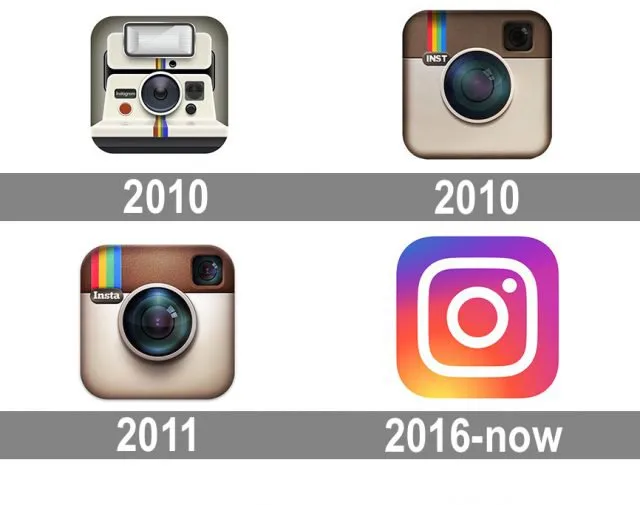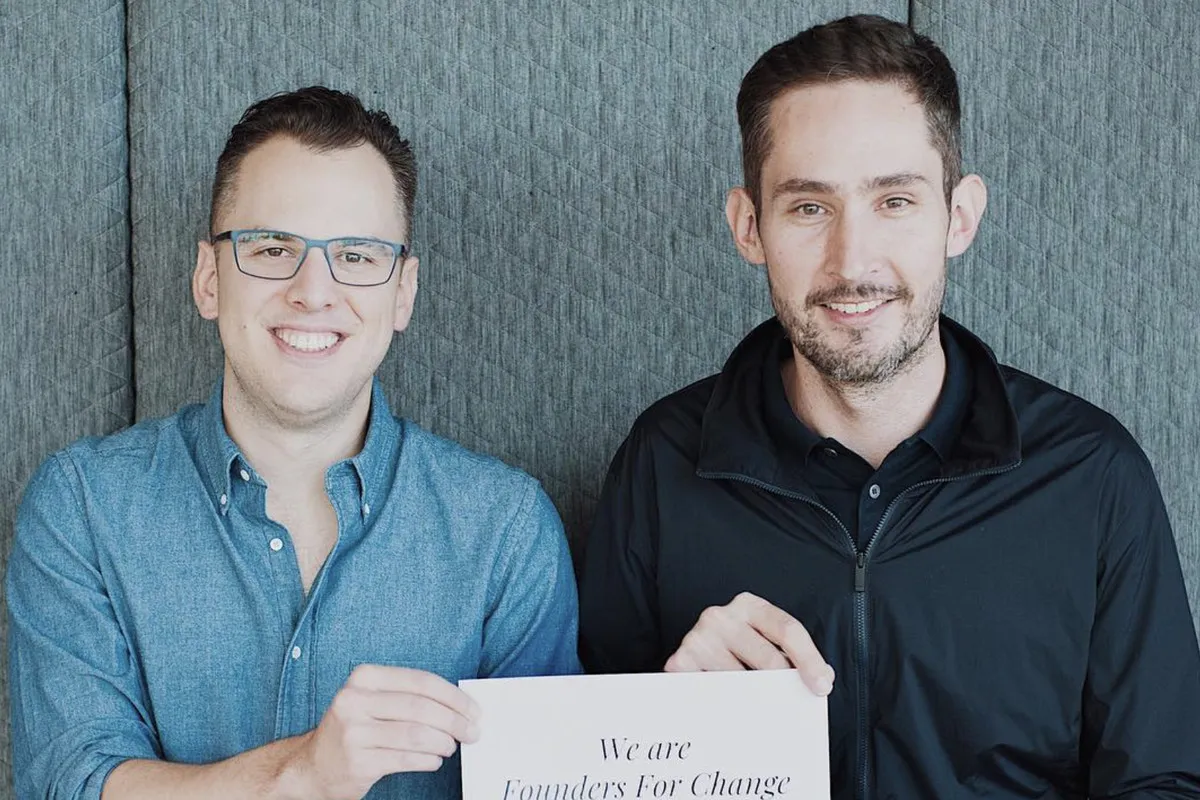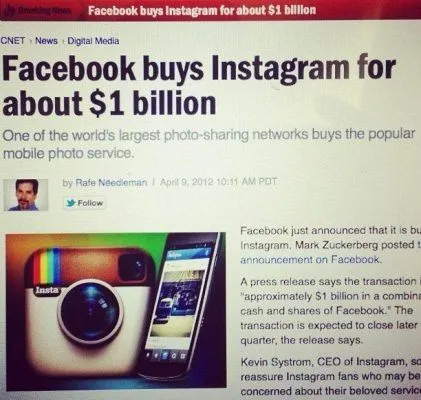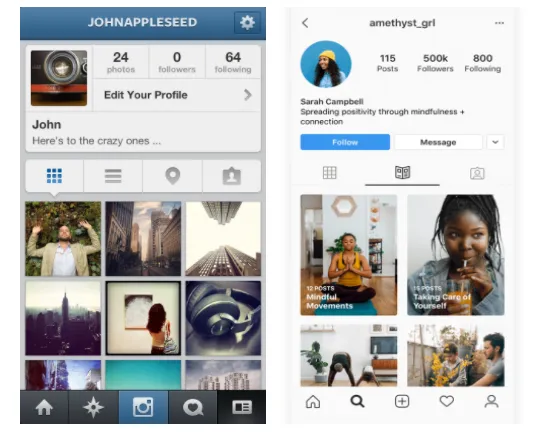The Complete History of Instagram: From Startup to Meta's Crown Jewel
Instagram has become more than just a photo-sharing app—it’s a cultural phenomenon that has reshaped how we communicate, consume content, and connect with others. With over 2 billion monthly active users as of 2022, Instagram stands as one of the most influential social media platforms in history. But how did this visual-first platform evolve from a simple startup idea to Meta’s crown jewel?
This comprehensive guide traces Instagram’s remarkable journey, from its humble beginnings as “Burbn” to becoming the driving force behind the creator economy and influencer culture we know today.

The evolution of Instagram’s iconic logo reflects the platform’s transformation from a simple photo app to a comprehensive social media powerhouse
The Genesis: Before Instagram (2009-2010)
Kevin Systrom’s Vision
The Instagram story begins with Kevin Systrom, a Stanford graduate who had previously worked at Google. In 2009, Systrom was developing an app called Burbn, named after his passion for bourbon and whiskey. This location-based app was inspired by the popularity of Foursquare and allowed users to:
- Check in to locations
- Make plans with friends
- Share photos (though this wasn’t the primary feature)
- Earn points for activities
[Image suggestion: Photo of Kevin Systrom working on early prototypes or at Stanford]
Enter Mike Krieger
Systrom soon recruited Mike Krieger, a fellow Stanford graduate who had experience working on the social media platform Meebo. Together, they began to refine their vision, but they quickly realized that Burbn was too complex and unfocused.
The pivotal moment came when they noticed users were primarily engaging with just one feature: photo sharing. This insight would change everything.

Kevin Systrom and Mike Krieger, the visionary co-founders who transformed a simple photo-sharing idea into a global phenomenon
The Birth of Instagram (2010)
The Great Pivot
In early 2010, Systrom and Krieger made the bold decision to strip away most of Burbn’s features and focus exclusively on photo sharing. They renamed the app Instagram, combining “instant” and “telegram” to represent the instant sharing of photo messages.
The new Instagram app featured three core elements:
- Photo sharing with square format (640x640 pixels to fit iPhone screens)
- Filters to enhance images
- Social features like commenting and liking
Technical Innovation
The duo embraced minimalism in their design approach. They decided to:
- Skip a web version initially
- Focus exclusively on iOS to capitalize on the iPhone 4’s improved camera
- Implement a simple, intuitive interface
- Include photo filters that made amateur photographers look professional

The original Instagram interface from 2010 - simple, elegant, and focused purely on photo sharing with filters
The Launch That Changed Everything
On October 6, 2010, Instagram launched in Apple’s App Store. The results were unprecedented:
Launch Day Statistics:
- 25,000 users signed up on the first day
- 1 million users within 3 months
- The app frequently crashed due to overwhelming demand
- It quickly climbed to the top of the App Store charts
Historical Significance: Instagram’s launch day performance was unheard of for a photo-sharing app. Most social media platforms took years to reach their first million users, but Instagram achieved this milestone in just 10 weeks.
[Image suggestion: Graph showing Instagram’s user growth in its first year]
The Rapid Growth Phase (2011-2012)
Funding and Recognition
Instagram’s explosive growth attracted significant attention from investors and the tech community:
- February 2011: Raised $7 million in Series A funding
- The app won numerous awards and accolades
- Celebrity users began joining, amplifying its reach
- Photography communities embraced the platform
Android Expansion
Despite initial resistance, Instagram finally launched on Android in April 2012. Within 12 hours, the Android version had been downloaded over 1 million times, proving that demand extended far beyond iOS users.
[Image suggestion: Side-by-side screenshots of Instagram on iOS vs Android when Android version launched]
The Facebook Acquisition (2012)
The $1 Billion Deal
Just 18 months after launch and only days after the Android release, Facebook made an unprecedented move. On April 9, 2012, Mark Zuckerberg announced Facebook’s acquisition of Instagram for $1 billion in cash and stock.
At the time, Instagram had:
- 13 employees
- No revenue
- 100 million active users
The acquisition was remarkable for several reasons:
- Largest tech acquisition for a company with no revenue
- Occurred one month before Facebook’s IPO
- Represented Facebook’s recognition of mobile-first social media

Historic newspaper coverage of Facebook’s unprecedented $1 billion acquisition of Instagram in 2012
Industry Shock
The tech industry was stunned by the acquisition price. Many questioned whether a photo-sharing app was worth $1 billion. In hindsight, it proved to be one of the most strategic acquisitions in tech history.
Expert Analysis: “The Instagram acquisition was initially seen as Facebook’s panic response to mobile competition. Today, it’s viewed as Mark Zuckerberg’s most prescient strategic move, with Instagram now generating over $50 billion in annual revenue.” - Tech Industry Analyst
Why the Acquisition Was Controversial:
- Instagram had zero revenue at the time of purchase
- The company had only 13 employees
- Many analysts called it a “bubble-era overpayment”
- Traditional media companies were valued at similar amounts
- Facebook’s stock price fell 10% after the announcement
Evolution Under Facebook (2012-2021)
Maintaining Independence
Despite the acquisition, Facebook initially allowed Instagram to operate relatively independently under Systrom and Krieger’s leadership. This autonomy proved crucial for Instagram’s continued innovation.
Major Feature Additions
Instagram Video (2013)
In response to Twitter’s Vine, Instagram introduced 15-second video sharing, later expanding to 60 seconds.
Instagram Stories (2016)
Directly inspired by Snapchat, Instagram Stories allowed users to share temporary content that disappeared after 24 hours. This feature became hugely successful and marked Instagram’s transition from a chronological feed to algorithm-based content.
[Image suggestion: Evolution of Instagram features timeline graphic]
IGTV (2018)
Instagram launched IGTV for longer-form vertical videos, targeting content creators and competing with YouTube.
Instagram Reels (2020)
In response to TikTok’s rise, Instagram introduced Reels for short-form video content, becoming a central part of the platform’s strategy.
Platform Changes and Controversies
The Algorithm Shift (2016)
Instagram moved from chronological feeds to algorithmic feeds, prioritizing engagement over recency. This change was controversial but increased user engagement.
The Departure of Founders (2018)
Kevin Systrom and Mike Krieger left Instagram amid reported tensions with Facebook over the platform’s direction and autonomy.
[Image suggestion: Photo of Systrom and Krieger at their departure announcement]
Instagram Under Meta (2021-Present)
The Meta Rebrand
When Facebook rebranded to Meta in 2021, Instagram became part of the broader “metaverse” vision while maintaining its core identity as a visual-first platform.
Current Features and Focus
Today’s Instagram includes:
- Feed posts (photos and videos)
- Stories (temporary content)
- Reels (short-form videos)
- IGTV/Instagram TV (long-form videos)
- Instagram Shopping (e-commerce integration)
- Instagram Live (real-time streaming)
- Direct Messages (private communication)

Side-by-side comparison of Instagram’s interface evolution - from the original simple photo grid to today’s feature-rich experience with Stories, Reels, and advanced functionality
Cultural Impact and Influence
The Rise of Influencer Culture
Instagram single-handedly created the influencer economy. The platform enabled individuals to build massive followings and monetize their content through:
- Brand partnerships
- Sponsored posts
- Product placements
- Direct sales
Visual Communication Revolution
Instagram changed how we communicate, making visual storytelling mainstream. It influenced:
- Photography trends and techniques
- Marketing and advertising strategies
- News consumption and journalism
- Art and creative expression
[Image suggestion: Collage showing various types of Instagram content - influencer posts, brand content, art, news, etc.]
Mental Health Concerns
Instagram’s impact hasn’t been entirely positive. Research has highlighted concerns about:
- Body image issues, particularly among young women
- Social comparison and FOMO (Fear of Missing Out)
- Digital addiction and screen time
- Cyberbullying and online harassment
Meta has implemented various features to address these concerns, including hiding like counts and providing mental health resources.
Privacy and Content Management Challenges
The Need for Better Control
As Instagram grew from a simple photo-sharing app to a comprehensive communication platform, users increasingly needed tools to manage their expanding digital footprint. The average Instagram user now has:
Content Accumulation Statistics:
- 500-2,000 posts over their account lifetime
- 10,000+ direct messages exchanged annually
- Hundreds of Stories archived over years of use
- Multiple conversations across personal and business contexts
This accumulation creates several challenges:
- Privacy concerns with old, potentially sensitive content
- Professional image management for career advancement
- Storage and organization of years of communications
- Digital wellness and desire for fresh starts
Direct Message Management: A Growing Need
Instagram’s direct messaging feature has evolved into a crucial communication channel, but the platform’s native management tools remain limited.
Common DM Management Challenges:
- Bulk deletion limitations - Instagram only allows individual message deletion
- Conversation cleanup - No easy way to clear entire chat histories
- Privacy control - Difficulty removing sensitive or outdated conversations
- Business communication - Managing professional vs. personal message threads
- Account transitions - Cleaning up before job changes or life transitions
User Insight: “I had over 15,000 Instagram DMs from 8 years of using the platform. When I started job hunting, I realized I needed to clean up my digital presence, but Instagram’s manual deletion process would have taken weeks.” - Sarah M., Marketing Professional
Why Users Need Better DM Management:
- Professional reputation management in career-focused industries
- Privacy protection when sharing devices or accounts
- Relationship management when cleaning up after breakups or conflicts
- Business operations for influencers and content creators managing multiple conversations
- Digital minimalism as part of healthy social media habits
This is where specialized tools like Unpost become essential, offering users the ability to bulk delete Instagram direct messages and maintain better control over their digital communications. Rather than spending hours manually deleting individual messages, users can efficiently manage their entire message history in minutes.
For users seeking comprehensive guidance on managing their Instagram conversations, our detailed Step-by-Step Guide to Deleting IG Chats covers everything from deleting individual messages to clearing entire conversations, providing both manual methods and professional solutions for efficient message management.
[Image suggestion: Screenshot showing Instagram’s direct message interface]
Instagram by the Numbers (2025)
Instagram’s current scale is staggering, representing one of the most successful digital platforms in history.
User Statistics
Global Reach:
- 2+ billion monthly active users worldwide
- 500 million daily Stories users
- 140 billion Reels plays daily
- Users spend an average of 30+ minutes daily on the platform
- Available in 32 languages across 195 countries
Business Impact
Commercial Influence:
- 200 million business profiles actively using the platform
- 90% of users follow at least one business account
- 50% of people have visited a website to make a purchase after seeing it on Instagram
- $50+ billion in annual revenue for Meta from Instagram advertising
- 83% of users discover new products and services on Instagram
Market Impact: Instagram has become the second-largest social media advertising platform globally, with businesses spending over $50 billion annually on Instagram ads, making it more valuable than many Fortune 500 companies.
[Image suggestion: Infographic showing these key statistics]
The Technology Behind Instagram
Infrastructure Evolution
Instagram’s technical infrastructure has evolved dramatically:
- 2010: Simple photo-sharing on basic servers
- 2015: Advanced machine learning for feed algorithms
- 2020: Sophisticated AI for content recommendation and moderation
- 2025: Complex multi-modal content systems supporting photos, videos, AR, and shopping
Innovation Highlights
- Real-time photo processing and filter application
- Algorithmic content discovery and recommendation
- Augmented Reality filters and effects
- E-commerce integration with Instagram Shopping
- Advanced content moderation using AI
Controversies and Challenges
Major Controversies
2016: Algorithm Changes
The shift from chronological to algorithmic feeds sparked user backlash and concerns about organic reach for creators and businesses.
2018: Founders’ Departure
Kevin Systrom and Mike Krieger’s sudden departure raised questions about Facebook’s management of Instagram.
2021: Teen Mental Health
Internal research revealed Instagram’s negative impact on teen mental health, leading to congressional hearings and policy changes.
Ongoing Challenges
- Content moderation at scale
- Misinformation and fake news
- Privacy concerns and data usage
- Competition from TikTok and other platforms
- Regulatory scrutiny and antitrust concerns
[Image suggestion: Collage of news headlines about Instagram controversies]
Instagram’s Future Outlook
Emerging Trends
- AR and VR integration as part of Meta’s metaverse vision
- Enhanced shopping experiences with virtual try-ons
- AI-powered content creation tools
- Improved creator monetization features
- Better privacy and safety controls
Predictions for 2025 and Beyond
As Instagram continues to evolve, we can expect:
- Deeper integration with Meta’s other platforms
- More sophisticated AI-driven features
- Enhanced privacy controls in response to user demands
- Continued competition with TikTok and emerging platforms
- Greater focus on creator economy and monetization
Conclusion: Instagram’s Lasting Legacy
From Kevin Systrom’s bourbon-inspired location app to Meta’s visual communication powerhouse, Instagram’s journey represents one of the most successful pivots in tech history. The platform has fundamentally changed how we share experiences, consume content, and build communities online.
Instagram’s impact extends far beyond technology—it has influenced culture, commerce, and communication in ways its founders could never have imagined. As we look toward the future, Instagram continues to evolve, adapting to new challenges while maintaining its core mission of bringing the world closer together through visual storytelling.
Whether you’re a casual user sharing memories with friends, a business building your brand, or a creator making a living through your content, Instagram’s history offers valuable lessons about innovation, adaptation, and the power of simplicity in design.
For users looking to maintain better control over their Instagram experience, including managing their direct messages and digital footprint, understanding this history helps contextualize the importance of having the right tools to manage your presence on one of the world’s most influential platforms.
Take Control of Your Instagram Experience Today
Instagram’s evolution from a simple photo-sharing app to a comprehensive communication platform has created new challenges for users managing their digital presence. As the platform continues to grow and evolve, the need for better privacy and content management tools becomes increasingly important.
Your Instagram Management Action Plan:
Week 1: Digital Footprint Audit
- Review your current Instagram posts, Stories, and direct messages
- Identify content that no longer aligns with your personal or professional goals
- Assess your privacy settings and content visibility
- Document conversations and content you want to preserve vs. delete
Week 2: Content Cleanup Strategy
- Use Instagram’s native tools for basic content management
- Consider third-party solutions for bulk operations and complex management tasks
- Clean up your direct messages using efficient deletion tools
- Update your bio, highlights, and featured content to reflect your current image
Week 3: Ongoing Management System
- Establish regular review schedules for your Instagram content
- Set privacy boundaries for different types of conversations and content
- Implement tools and workflows that make ongoing management sustainable
- Create backup strategies for important conversations and content
Week 4: Long-term Digital Wellness
- Develop healthy social media habits that support your personal and professional goals
- Create systems for managing future content and conversations proactively
- Establish boundaries between personal and professional Instagram use
- Plan for major life transitions that might require significant account cleanup
Professional Instagram Management Tools
While Instagram provides basic tools for content management, professional users often need more comprehensive solutions for efficient account management.
Advanced Instagram Management Features:
- Bulk Message Deletion: Efficiently remove thousands of direct messages in minutes
- Selective Content Management: Target specific conversations, dates, or content types
- Privacy Protection: Comprehensive tools for managing your digital footprint
- Time-Saving Automation: Reduce manual work for large-scale account cleanup
Whether you’re a business professional managing your career image, a content creator organizing your communications, or simply someone who values digital privacy, having the right tools makes all the difference in maintaining control over your Instagram presence.
Ready to take control of your Instagram direct messages? Unpost provides the professional-grade tools you need to efficiently manage and delete your Instagram DMs in bulk, giving you the privacy control and peace of mind you deserve.
Your Instagram journey continues, but now you have the knowledge and tools to manage it on your terms. The platform that started as Kevin Systrom’s bourbon-inspired experiment has become an integral part of our digital lives—make sure you’re in control of your experience.
Ready to Clean Up?
Join thousands of users who trust Unpost to manage their digital footprint securely and efficiently.
Download Now